The Potomac River has shown remarkable recovery in recent years, and efforts continue to protect the waterway.
Local groups and government agencies are working toward an ambitious goal: making the river swimmable year-round. From large-scale tunnel construction to community outreach, advocates say momentum is building to restore the nation’s river and ensure future generations can enjoy it safely.
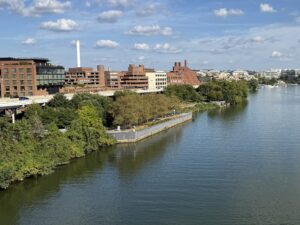
One recent example came on Sept. 20, when more than 50 kayakers took to the water for the inaugural Potomac Paddle Off at the Georgetown waterfront. Proceeds from the race supported restoration efforts, and organizers said the event highlighted both community spirit and the river’s potential comeback.
The region’s leading clean water advocate Potomac Conservancy hosted the event in partnership with Guest Services, a hospitality management company.
The event was open to paddlers of all levels, offering short-course and long-course options. Both options required participants to paddle beneath the historic Key Bridge in an upstream-and-back course.
“It’s exciting to see more than 50 people coming for the race,” Guest Services CEO Nico Foris said at the opening ceremony. “This is the kind of event that brings the community together whether you’re racing, cheering from the shore, or learning how to make a difference for our river.”
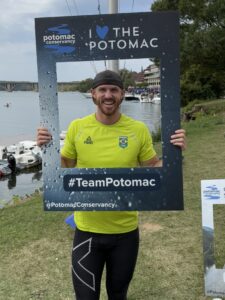
Potomac Conservancy President Hedrick Belin said more people would get involved to protect Potomac when they have opportunities to get on the river and “develop a true joy of how special it is.”
The “Potomac is both the nation’s river and our hometown river,” Belin said, “[Participants] might volunteer for cleanups and lend their voice to strengthen clean water policies.”
Community turns out for the paddle.
The event successfully drew participants from diverse backgrounds, including local students, new residents, immigrants, and professional paddlers.
“Without this river,” Aquil Abdullah said, “it’s possible that I wouldn’t be here right now, because this river is where I learned to row.”
Born and raised in Georgetown, Abdullah, a former Olympic rower, was invited to the event as the emcee.
“This is a great event as like a waterman,” the winner of the long course race Ian Ross said. “I feel like if you’re not an environmentalist, you’re probably super hypocritical, and you probably shouldn’t call yourself a waterman.”
Ross added that it was important for everyone to have a piece in taking care of the river, since it was also the water they drank. Although he didn’t make a lot of money doing this work, he said it was worth it to him, and that was why he was there.
Harrison Tsui, who moved to Georgetown from New York in August to work as a legislative fellow for the House, said he had not known much about the river before participating.
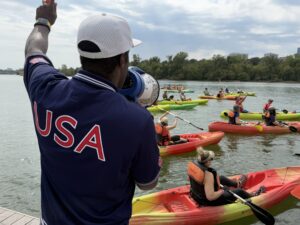
The “Potomac River for D.C. is like East River for us in New York,” he said, adding that the experience highlighted the importance of promoting awareness of environment protection.
Carol Wong, a volunteer, said the event encourages families to get involved while also raising funds for an important mission.
Ongoing efforts to improve water quality.
Potomac Conservancy and other organizations have made tremendous progress to restore the river’s health in last 20 years. The Potomac River’s health has improved from a dismal “D” to a “B” grade in the span of just 12 years by 2023, according to the group’s biannual Potomac River Report Card.
Though great achievements have been reached, said Melissa Diemand, vice president of communications of Potomac Conservancy, work is not yet done because there still are issues because of pollution.
“Anytime it rains hard in the region, there’ll be, unfortunately, raw sewage going into the river, and so there’s steps being taken to reduce that those overflow,” Diemand said.
She added that one of the biggest challenges the team still faces is the continued loss of tree cover along the shorelines. These green buffer strips help filter the water, she noted, and it is critical to protect existing trees and forests, as has been done along the C&O Canal just upstream.
Various government agencies and organizations are actively coordinating efforts to protect the river.
DC Water began construction to stabilize the slope on Canal Road NW between Foxhall Road and the Georgetown University entrance on Sept. 20, the same day of the paddling race.
The slope stabilization is part of the $819 million Potomac River Tunnel Project, a 5.5-mile tunnel designed to sharply reduce untreated sewage and stormwater flowing into the Potomac River.
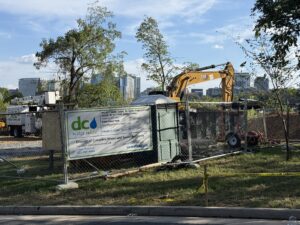
Crews plan to stabilize the slope by clearing loose material and trees, drilling about 725 steel dowels into the hillside, securing it with mesh, applying hydroseed, and replanting trees at the top, according to the project fact sheet.
The work is expected to take about six-and-a-half months. Temporary road lane closures may occur during off-peak hours, and the sidewalk will remain closed for the duration of the project.
Looking toward swimming in the river.
“There used to be swimming historically, like 100 years ago,” Belin said. “It’s sort of our goal to get to a river that’s where you can swim in it or paddle in it 365 days a year without fear of getting sick.”
Other organizations, such as the Potomac Riverkeeper Network (PRKN), have also worked for years to end the decades-old ban on swimming in D.C.
PRKN has collected and tested weekly water samples from May to October for the past five years to determine when and where contact with the water is safe, according to the Swimmable Potomac Report 2024.
Data show that, on average, the water is safe for human contact more than 70% of the time across the five-year period.
PRKN Program Director Brent Walls said that everyone has a right to clean water and D.C. should protect the public’s right to swim in the Potomac River.
“It is our goal to have safe swimming almost every day of the year. This advocacy extends particularly to the District of Columbia, the only local jurisdiction with a decades-old, and now unnecessary, ban on swimming,” he said.
But the water quality for Georgetown seems less encouraging. PRKN ended the water quality monitoring season for the Upper Potomac this September, and weekly reports this year from May through September show that at two monitoring sites in Georgetown, the water met swimmable standards only about half the time.
“It won’t get well overnight,” Belin said. “We will definitely have more swimming activities.”
He said he remained optimistic about swimming in the river, and he hoped to see another Olympian in the future could say proudly, “I grew up swimming in the Potomac River.”

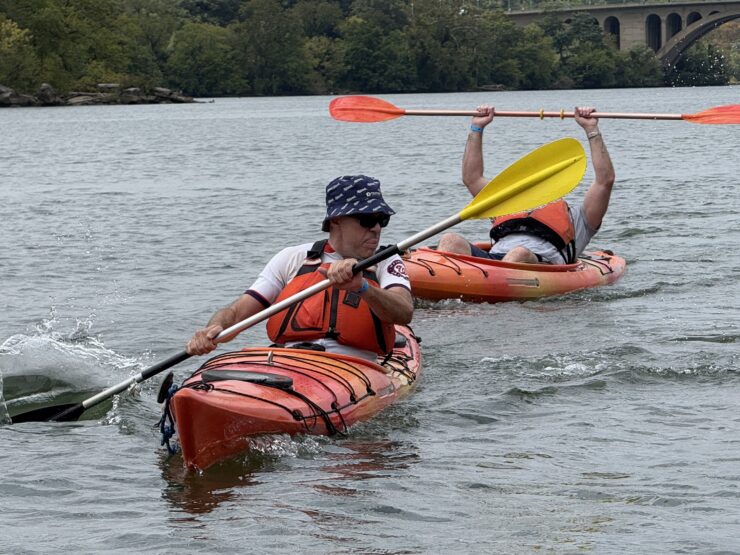
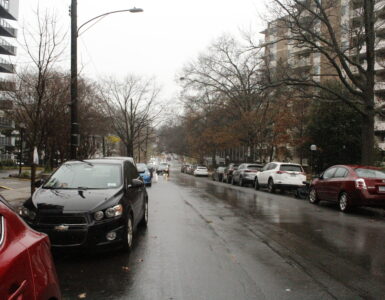
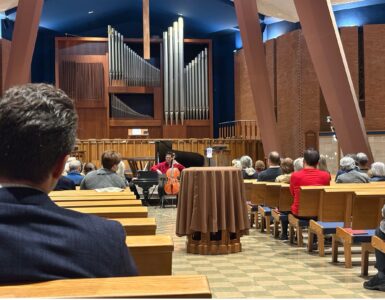
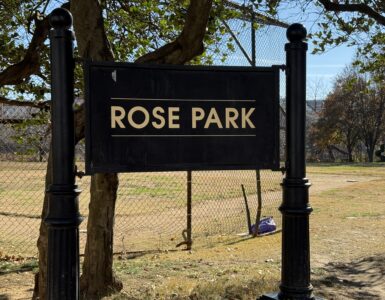










Add comment